
FURUYA Usamaru
-
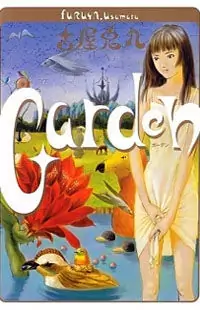 From Kotonoha:
From Kotonoha:
"Garden" is a collection of Furuya Usamaru's “indie” shorts that were published in Comic Cue, Manga Erotics and GARO respectively. The title is obviously a reference to Hieronymus Bosch’s famous triptych The Garden of Earthly Delights, with the first story being a homage to said painting. The other stories range from absurd comedies to fantasy to horror. It’s a very eclectic mixture, but make no mistake: artistically, Garden might just be Furuya’s most accomplished work after The Music of Marie.Updated: 2020-12-26Read -
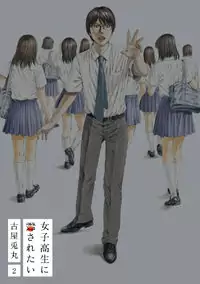
-
Complete
-
12 chapters
- Drama , Psychological , Romance , Slice Of Life , Mature
The story centers around Higashiyama Haruto, a high school teacher, whose dearest wish is to be killed by a high school girl.
(Source: MU)Updated: 2020-12-26Read -

-
Complete
-
15 chapters
- Adventure , Drama , Psychological
After miraculously surviving a freak helicopter accident, Hikari "Picasso" Haruma finds that he somehow has the power to help people through his art. He is helped by his friend Chiaki Yamamoto who was killed in the helicopter accident, but came back as an angel.
According to Chiaki, when the accident happened both she and Picasso died, but she begged God to save Picasso because of his wonderful talent, so Picasso survived the accident on condition that he saves other people. Basically when he sees someone in trouble, Picasso's able to draw a picture symbolizing the person's problem, and then enter that picture to see that person's hidden feelings and use that knowledge to help them in the real world.
(Picasso got his nickname because he wrote his name ヒカリ, hi-ka-ri, on his school shoes, but his リ looked like a ソ (so) and Chiaki called him "Hikaso" so he ended up being called Picasso. Even though he actually aspires to be like Da Vinci.)
(Source: MangaHelpers)Updated: 2021-08-25Read -
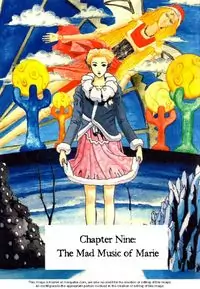 In just two volumes, the author manages to create an incredibly rich and fascinating world that is full of wonders and enchanting beauties—a world in which men are watched over by the mechanical goddess Marie who at times appears on the sky. Marie’s music brings people happiness and harmony. Their life is free from advanced technology and the longing for progress. The main story centers around Kai, a young man who develops a deep affection for Marie. His quest for enlightenment leads him inside Marie’s mechanical body where he learns the unbelievable truth about her and his own world.
In just two volumes, the author manages to create an incredibly rich and fascinating world that is full of wonders and enchanting beauties—a world in which men are watched over by the mechanical goddess Marie who at times appears on the sky. Marie’s music brings people happiness and harmony. Their life is free from advanced technology and the longing for progress. The main story centers around Kai, a young man who develops a deep affection for Marie. His quest for enlightenment leads him inside Marie’s mechanical body where he learns the unbelievable truth about her and his own world.
(Source: Kotonoha)Updated: 2021-08-25Read -
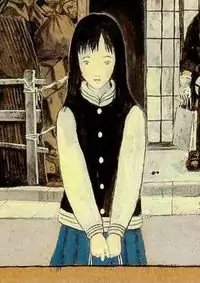
-
Complete
-
1 chapters
- Slice Of Life , One Shot
A short oneshot about a girl name Natsuki who wonders if the world can be saved. (Source: M-U)Updated: 2021-08-25Read -
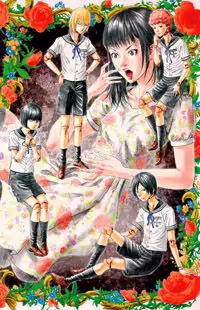
-
On Going
-
1 chapters
- Supernatural
The manga is about Amane Miyakata, a doll maker, and the miraculous story of her seven boy dolls.
(Source: ANN)Updated: 2020-12-26Read -
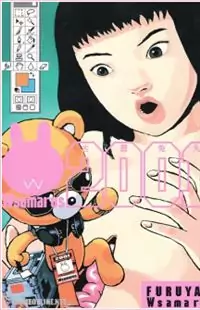
-
Complete
-
6 chapters
- Drama , Psychological , Romance , School Life , Horror
Compilation of assorted stories published in different magazines.Updated: 2020-12-26Read -
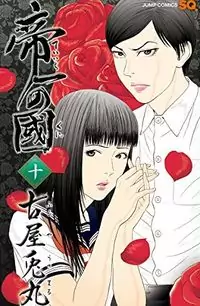
-
Complete
-
24 chapters
- Drama , Psychological , School Life
Akaba Teiichi is beginning his student career at an elite private boy's high school, which was originally renowned for producing many excellent naval officers. In its current incarnation, his school regularly turns out many important politicians and bureaucrats, and networking starts from day one. Teiichi is determined to become the school's student council president, a position which will help launch him into the political sphere after graduation. He has run his life so far by maintaining a perfect image, while never neglecting the darker side of politics.
He has plenty of help to reach his goal. Teiichi's father, who is now an important bureaucrat, lost the position of student council president during his high school years, and that loss has continually hindered his career. He's determined to support his son's success in any way he can. Teiichi also has his loyal best friend and second-in-command, Koumei, helping him with strategy. On the side of emotional support, Teiichi has his little sister and mother, in addition to his girlfriend Mimiko.
However, an unexpected force may rise against his ambition. An idealistic new teacher, Kurosaka Reiko, is determined to use her power to undermine the corrupt political traditions of their school. Her first step is to push a well-liked, highly intelligent, but poor student named Otaka Dan, who is not from the elite feeder middle school, into the political world. Will Teiichi be able to use the existing political system to achieve his goals, in spite of Kurosaka's efforts to upset the status quo?
(Source: Raw Distro)Updated: 2021-07-31Read -
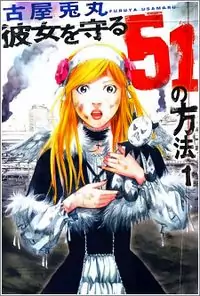 February 23rd, 20XX.
February 23rd, 20XX.
Looking for a job in the famous TV station at Odaiba, college senior Jin Mishima attended the recruitment orientation. Not far away from the station, Nanako Okano, a gothic lolita trying to attend a concert, found out that her friends tricked her about the concert ticket because of jealousy. The two bumped into each other and "reunited", they were junior high classmates, moments before an earthquake of Richter Scale 8.1 turned the island (the entire city, in fact) into ruins.
From here on, 51 Ways is a predictable but remarkably believable survival adventure. Based on a well-researched novel by Minoru Watanabe, the series paints a picture not quite as explicit and horrifying as ones in other apocalyptic fiction, but one that is frightening in it's detail.
Like many of Furuya's other works, we're also shown just how fragmented and superficial Japanese youth has become: gals, rock stars, Gothic Lolita's, otaku, salarymen, ganguro, and schoolgirls are all here in their self-imposed stereotypical, shallow glory. But while the ugliness of the fragmentation of Tokyo youth is striking - these people all come together in the face of disaster in a way that's ultimately hopeful. When you strip off the posing and expensive clothing: we're all the same.
In the end, 51 Ways is one of Furuya's most optimistic and mainstream works. It would make a lovely gateway drug for more timid independent comic readers or shoujo fans looking for something with a bit more bite.
(Source: ANN & Anime Online)Updated: 2021-09-08Read -
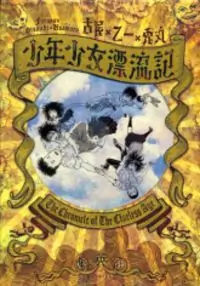
-
Complete
-
13 chapters
- Drama , Psychological , Seinen
A collection of standalone stories written by both Furuya Usamaru and Otsuichi. The stories all revolve around the common troubles that teenagers go through, whether it be falling out with a friend, being bullied, or dieting.Updated: 2021-08-25Read -

-
Complete
-
10 chapters
- Comedy , Supernatural , School Life , Ecchi
[From Viz]:
So just what is with this fascination for the Japanese teenage girl? We're talking about that extreme variant of her--that highly evolved creature of Japan's frantically trendy consumer culture...the ko-gal. Short Cuts is a unique and surreal Japanese comic strip that provides an illustrated journey into the ko-gal's world, created by Usamaru Furuya, one of Japan's most highly esteemed avant-garde comic artists.Updated: 2021-08-25Read -

-
Complete
-
1 chapters
- Comedy , Supernatural , Psychological , Seinen , Mature
Palepoli goes beyond the framework of standard four-panel manga and views its structure in new ways. Actually, Furuya knew nothing of conventional manga styles and methods when he started Palepoli. As a result, he created something that bore little similarity to other manga.
(Source: MU)Updated: 2020-12-26Read -
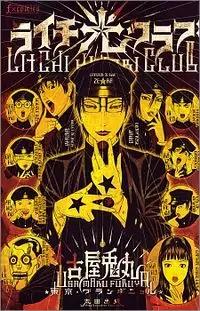 For the sooty industrial town's lads there's only one point of light: the Light Club, a secret brotherhood they've organized in an abandoned factory. They're on the verge of booting up their crowning achievement, a "thinking machine" fueled by lychee fruits. At the same time, the middle schoolers' cooties-fearing solidarity is devolving into a downright National Socialist muck of murderous paranoia, perverse aestheticism, and (not always) suppressed homosexuality.
For the sooty industrial town's lads there's only one point of light: the Light Club, a secret brotherhood they've organized in an abandoned factory. They're on the verge of booting up their crowning achievement, a "thinking machine" fueled by lychee fruits. At the same time, the middle schoolers' cooties-fearing solidarity is devolving into a downright National Socialist muck of murderous paranoia, perverse aestheticism, and (not always) suppressed homosexuality.
(Source: Vertical)Updated: 2022-03-18Read -

-
Complete
-
25 chapters
- Action , Adventure , Drama , Supernatural , Psychological , Romance , Historical , Mature , Tragedy
A group of thirteen boys join the children's crusades of 1212. Violence ensues.Updated: 2021-08-26Read